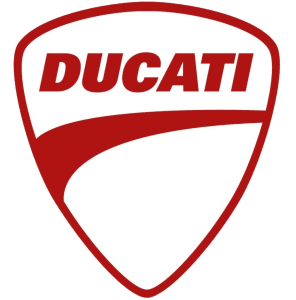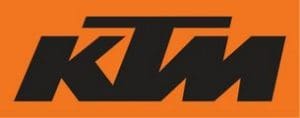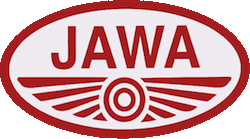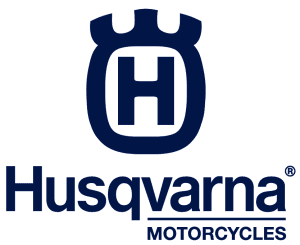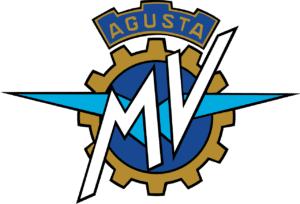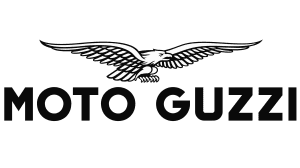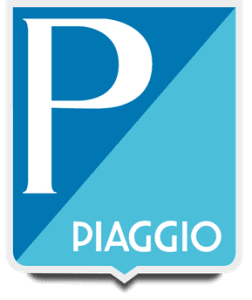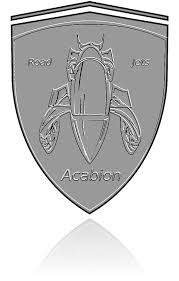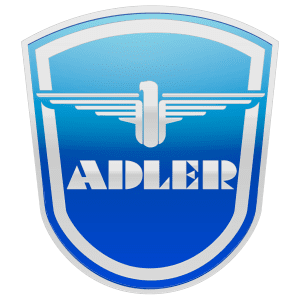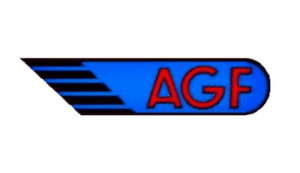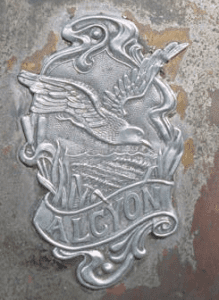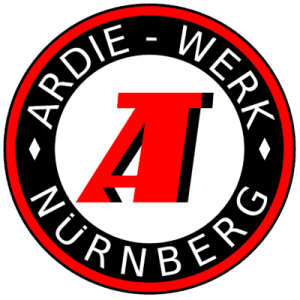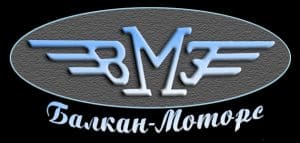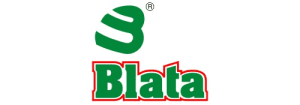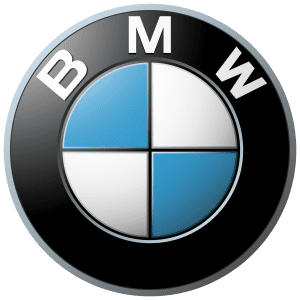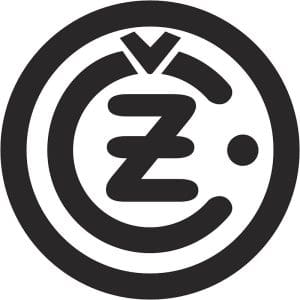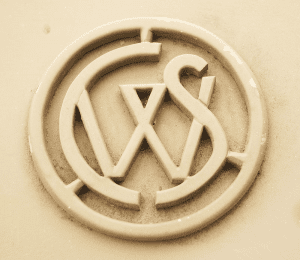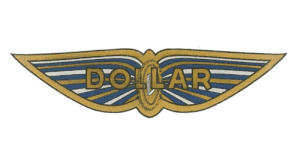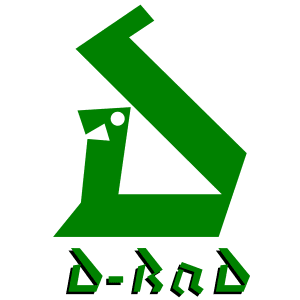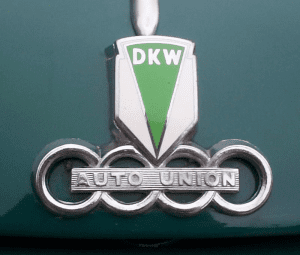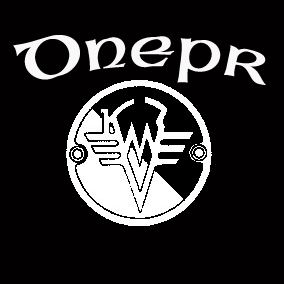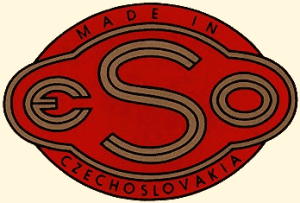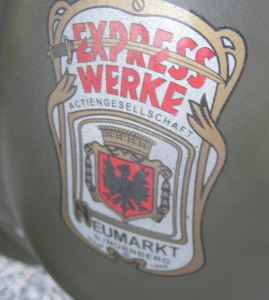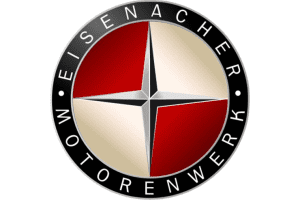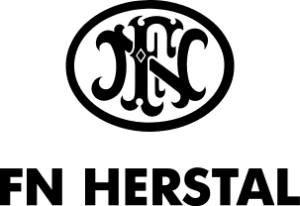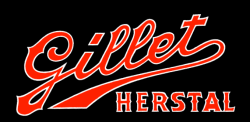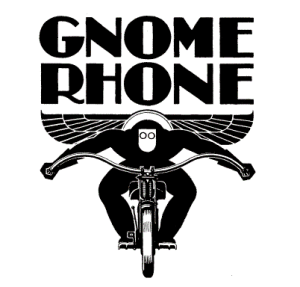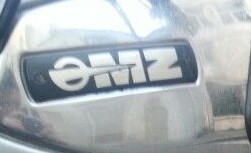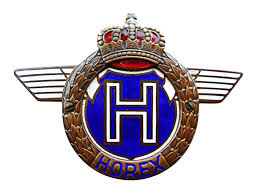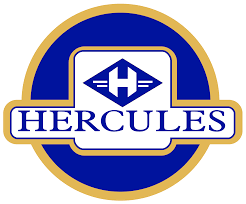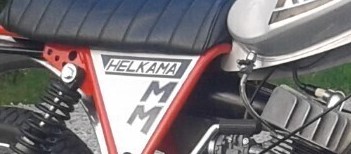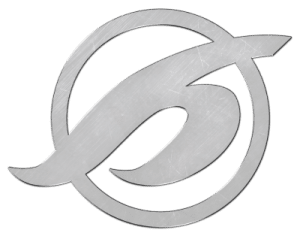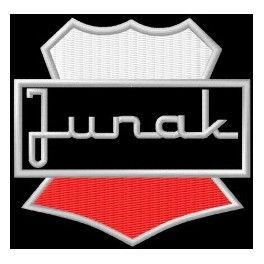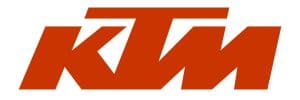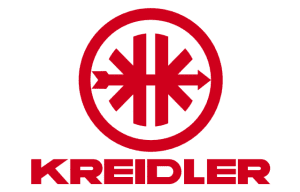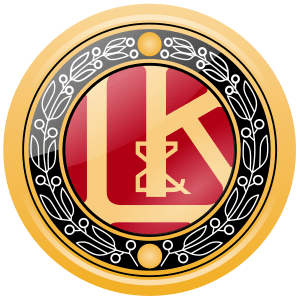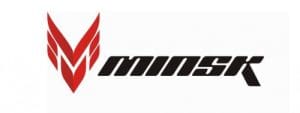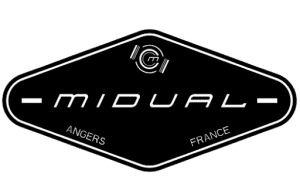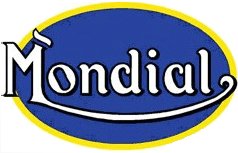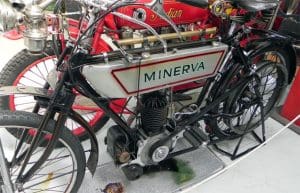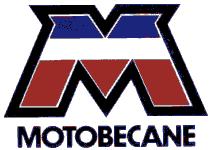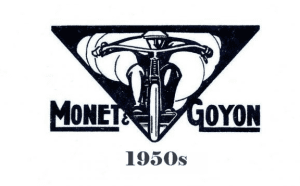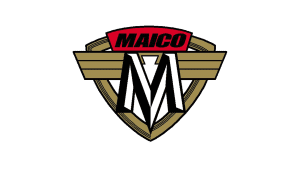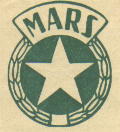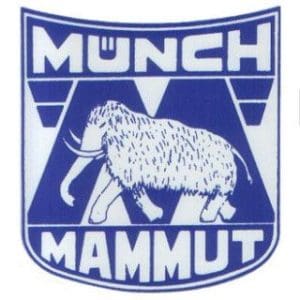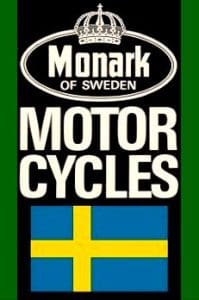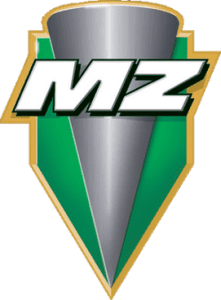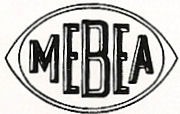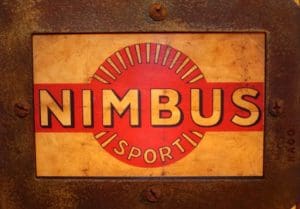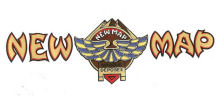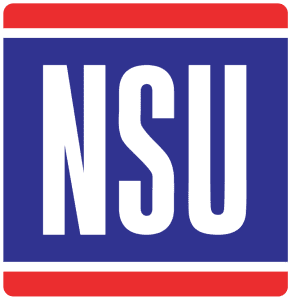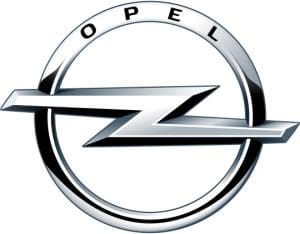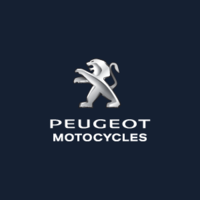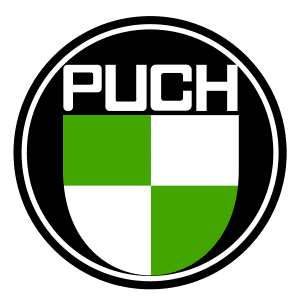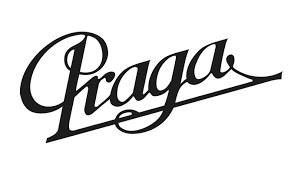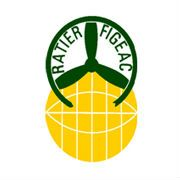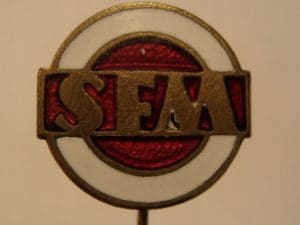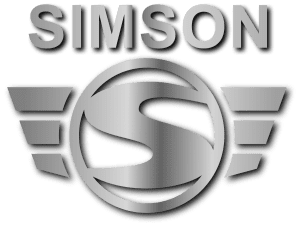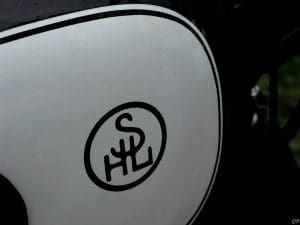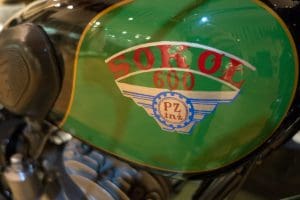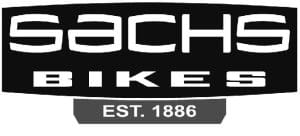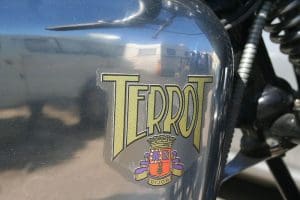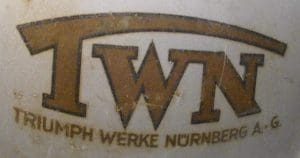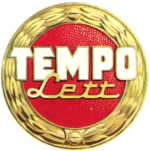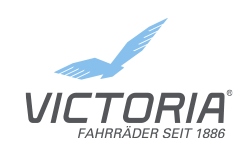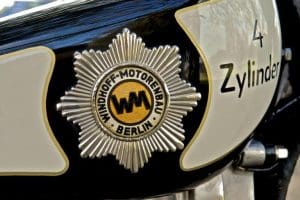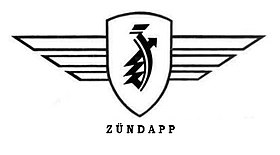
Acabion
Acabion is a German motorcycle manufacturer which specializes in creating prototypes and concept bikes. The company became popular when they released the Acabion GTBO, an aerodynamically designed super motor bike which can reach speeds of up to 340 mph.

Adler
Adler was a German manufacturer of cars, motorcycles, typewriters, and bicycles, in operation from 1900 until 1957. Adler means eagle in German. Before the first World War, the firm used De Dion two and four-cylinder engines in cars that ranged from 1032cc to 9081cc. Their first motorcycles appeared in 1902, and until 1910 they produced 3, 3.5 and 5 HP machines. After 1910 they ceased motorcycle production and focused on bicycles, typewriters, and automobiles.

AJP
AJP Motos is a Portuguese manufacturer of enduro and off-road motorcycles. AJP Motos was founded in 1987 by brothers António Pinto and Jorge Pinto in Penafiel, Portugal. The firm started as a workshop preparing off-road motorcycles and later diversified into manufacturing complete bikes.

AGF
AGF was a small French motorcycle manufacturer named after the amalgamation of the initials of its two founders: Andre and George Faizant. The company produced the AGF motorcycle from 1948 to 1956 which used Ydral engines of 123cc and 173cc.

Alcyon
Alcyon was a French bicycle, automobile and motorcycle manufacturer that operated from 1903 to 1954. Alcyon originated from about 1890 when Edmond Gentil started the manufacture of bicycles in Neuilly, Seine. In 1902, this was complemented by motorcycle production and in 1906, the first cars were shown at the fair “Mondial de l’Automobile” in Paris, France. Also in 1906 it founded the professional Alcyon cycling team which was active until 1955, including winning the Tour de France 6 times.

Aprilia is an Italian-born motorcycle brand founded in Norale, Italy, by Alberto Beggio through the wreckage of the Second World War. Alberto originally sought out to build bicycles, quickly transitioning to scooters and small-displacement motorcycles before finally making the jump to full-size motorcycles in the ’90s. Aprilia has a rich history in racing beginning in the smaller displacement categories winning 19 manufacturer championships in the 125cc and 250cc class. Today, they produce some of the world’s most competitive race bikes in motorsport and offer a plethora of motorcycles for consumers to purchase such as the infamous RSV4.

Automoto
Automoto was a French bicycle and motorcycle manufacturer founded in 1902, which joined with the Peugeot group in 1930 and was fully absorbed by 1962. Prior to World War II Automoto sourced engines from Chaise, Zurcher, J.A.P., and Villers. Engines produced by Ateliers de Mécanique du Centre (AMC) were also used after 1945.

Ardie
Ardie was a company in Nürnberg, Germany that manufactured motorcycles from 1919 until 1958. The company’s name derives from that of its founder, Arno Dietrich. At first Ardie made motorcycles with its own 288cc and 304cc single cylinder two-stroke engines. In 1925 the company switched to using engines from JAP in London, England. In the 1930s Ardie switched again to engines made by the German companies Bark and Kūchen.

Alta
Alta was a Greek manufacturer of light and heavier three-wheeler trucks, motorcycles and passenger cars. Production of motorcycles and three-wheeler trucks with Sachs 50cc engines started in its first factory in Athens in 1962. The 50S motorcycle model was known for its reliability (some survive to date in good working condition).

Balkan
Balkan was the first motorcycle manufacturer in Bulgaria. The company’s first model, the Balkan M1, released in 1957, was built under the open license of DKW, and was identical to the DKW RT250. In 1960 the company started using a design similar to Jawa, and other contemporary motorcycles.

Blata
Blata is a Czech company, based in Blansko, that produces high performance, mini moto bikes. These bikes are designed and built for use on a closed, paved circuit. Pavel Blata, the founder of the company, had his first experiences with motorbikes as a competitor of six-day motorbike endurance events. During this time he had the chance to ride many different machines. Blata learnt first hand how they worked, what was important for the rider and also what the rider actually wanted. He saw the positive as well as the negative aspects of each different machine. After some time he decided that he must do something with this knowledge.

BMW
BMW’s motorcycle history began in 1921 when the company commenced manufacturing engines for other companies. BMW’s own motorcycles—sold under the BMW Motorrad brand—began in 1923 with the BMW R 32, which was powered by a flat-twin engine (also called a “boxer-twin” engine). Production of motorcycles with flat-twin engines continues to this day, however, BMW has also produced many models with other types of engines.

We all know who BMW is; they are a German manufacturer of luxury automobiles and fast cars. But did you know that BMW initially started as an aircraft engine manufacturer during World War 1? The Germans have a knack for designing and engineering amazing engines and other mechanical wonders, so it should come as no surprise that their motorcycle sub-brand, BMW Motorrad, is wildly successful; selling 136,963 motorcycles in 2015 alone. BMW Motorrad built its first bike in 1923 featuring a flat-twin boxer engine – a traditional engine configuration that would follow them 100 years into the future – and has a plethora of different bikes and engine configurations available today.

Böhmerland
Böhmerland, or Čechie as it was known domestically, was a Czechoslovak motorcycle manufacturer from 1924 until World War II. Almost all aspects of this distinctive motorcycle were designed by Albin Leibisch, including the extremely long, all-welded tube-frame chassis, the built-up leading-link front forks, and solid cast aluminum wheels, which were an industry first, not widely adopted until the 1970s.

Česká zbrojovka Strakonice
Česká zbrojovka Strakonice is a Czech company that today manufactures forklifts and various automobile components. The company also manufactured motorcycles from 1935 to 1997. The company is known for designing and manufacturing Čezeta (a motor scooter) which they produced from 1957 to 1964.

Casal
Casal was the largest Portuguese motorcycle manufacturer, based in Aveiro. It was founded in 1964. Its first products included agricultural machinery and two strokes’ moped engines based on Zundapp ones. By 1967 it was producing complete motorcycles, the first one being a scooter, the S170 Carina – a copy of the Zundapp R50 – with a 50cc and 4 speed engine. Shortly after it rolled out its first mopeds, the K160, K161, K162 and K163 with two speeds, and the K181 with four speeds.

Centralne Warsztaty Samochodowe
Centralne Warsztaty Samochodowe (Central Car Works, CWS) was a Polish pre-war car and motorcycle manufacturer. Created by the Polish Ministry of War Affairs in 1918, the privately run company was initially entitled to service of all the mechanical equipment of the Polish Army, including tanks, armoured cars, motorcycles and lorries. With time, the CWS also started to produce its own designs of cars and motorcycles. Among the most notable designs were the CWS T-1 (the first Polish-made car to be serially built), T-2 and T-8 limousines, as well as the extremely successful Sokół motorcycle series.

Delta-Gnom
Delta-Gnom was an Austrian manufacturer founded in 1923 producing J.A.P.-engined motorcycles until the early 1930s. Production resumed after World War II using Rotax engines, until 1955.

Dollar
Dollar was a French motorcycle marque made by Ets. Delachanel in Joinville-le-Pont from 1925 to 1939. The motorcycles were made in several models ranging from 98 cc two stroke to 750 cc overhead valve four cylinder engines. There were also one and two cylinder models, with a sheet metal frame and Cardan shaft final drive. Dollar made its own engines, but also used Chaise overhead valve engines.

D-Rad
D-Rad was a motorcycle factory in Berlin (Spandau), Germany. The factory was founded as Star, but in 1923 Deutsche Industrie-Werke took it over and changed the name to D-Rad. NSU merged with Deutsche Industrie-Werke in 1932 and terminated D-Rad production in 1933.

DKW
DKW is a German car and motorcycle marque. DKW was one of the four companies that formed Auto Union in 1932 and is hence an ancestor of the modern day Audi company. During the late 1920s and until WWII broke out, DKW was the world’s largest motorcycle manufacturer and the pioneer of front wheel drive automobiles with their DKW Front. The motorcycle branch produced famous models such as the RT 125 pre- and post-World War II, and after the war with production at the original factory in GDR becoming MZ it made 175, 250 and 350 (cc) models.

Dnepr
Dnepr is a motorcycle brand produced in Kiev, Ukraine. It has been in use since 1967. Motorcycles have been produced in Kiev since 1946 at the Kiev Motorcycle Plant (Kyivskyi Mototsykletnyi Zavod (KMZ), Київський Мотоциклетний Завод, (КМЗ)). Initial production was of a 98 cc two-stroke model that was confiscated from the German firm Wanderer as reparations. The original design for KMZ heavy motorcycles, and their cousin the IMZ, is taken from the pre-World War II German BMW motorcycle R71, which the Soviet Union licensed in 1940.

Dresch
Dresch et Cie was one of France’s more important motorcycle manufacturers. It was founded in Étampes, France by the eccentric multi-millionaire French-Algerian industrialist Henri Dresch. Within five months of its founding, it was able to rise to the forefront of its specialty, going on to use advanced designs such as press-steel frame and forks and shaft drives. The company’s products ranged from 98cc to 246cc single-cylinder two-stroke machines to luxury 750cc four-cylinder model. Dresch used proprietary engines from various suppliers including Aubier Dunne, Chaise, JAP, MAG, Stainless and Train. In 1930, it produced a 498cc inline-twin model similar to the later British Sunbeam models.

Ducati is most known for being the Ferrari alter-ego of the motorcycle world. They are expensive, come in red, go fast, and are built in Italy. In 1926, Antonio Cavalieri Ducati and his three sons began building vacuum tubes and an assortment of other small mechanical bits and pieces. In the following decade, Ducati would begin to design and manufacture small pushrod engines to be mounted to bicycles before finally making the jump to build their own motorcycle in 1950. Today, Ducati is one of the most highly coveted motorcycle brands with posters adorning the walls of children and fanboys across the globe.

Eso
Eso was a Czech motorcycle factory producing only racing machines from 1949 until 1964, when it joined Jawa. ESO was founded by a motorcycle racing driver, and made bikes in 250, 350, and 500 cc, primarily for speedway, moto-cross and ice racing.[1][2] Engines were sourced from J.A.P. during the first year, and then an engine of ESO’s own after 1950, first copied from J.A.P. and later of their own design.

Express Werke
Express Werke AG was a company formed in 1884 in Neumarkt in der Oberpfalz, Germany that manufactured bicycles and motorcycles. In the 1930s Express built mopeds and lightweight motorcycles with 75cc and 98cc Sachs engines. From 1949 the company resumed production using Sachs and ILO engines up to 248cc. In 1958 Express merged with DKW and Victoria to form Zweirad Union. Zweirad Union terminated Express production in 1959.

Eisenacher Motorenwerk
Eisenacher Motorenwerk (EMW) was an East German manufacturer of automobiles and motorcycles based in Eisenach. EMW also entered Formula One as a constructor in 1953, but participated in only one race, the 1953 German Grand Prix.

FN
FN or Fabrique Nationale de Herstal is a Belgian company established in 1889 to make arms and ammunition, and from 1901 to 1967 was also a motorcycle manufacturer. FN manufactured one of the world’s first four-cylinder motorcycles, was famous for the use of shaft drive in all models from 1903 to 1923, achieved success in sprint and long distance motorcycle racing, and after 1945, also in motocross.

FAMEL
FAMEL – Fabrica de Produtos Metalicos Lda, was one of the largest Portuguese moped manufacturers between the 1960s and 1980s. Based in Águeda, the company built several models using Zündapp engines starting in 1962. Their most popular motorcycle was the XF-17 started in 1975. However, as the increased purchasing power in their home country Portugal made automobiles more and more popular, the moped market became smaller and the strong competition from European and Japanese imported models forced bankruptcy.

Gillet Herstal
Gillet Herstal was a Belgian manufacturer of motorcycles and automobiles based in Herstal. Started in 1919 as with the production of motorcycles, Gillet Herstal ended its production in 1959. In 1924 French journalist and long-distance rider Robert Sexé made the adventurous return journey from Paris to Constantinople on a Gillet and in 1925 he travelled from Paris to Moscow and back on a similar machine. These feats were widely publicised by the company and they earned the Gillet its name of honour “Tour du Monde”.

GIMA
GIMA or Groupement Industriel Métallurgique Automobile is a French motorcycle manufacturer that built lightweight bikes from 1947 until 1956. It resumed production in 2005 with the production of modern retro reincarnation of the original 1950s bikes, but compliant with modern standards

Gnome et Rhône
Gnome et Rhône was a major French aircraft engine manufacturer. From 1920 Gnome et Rhône diversified into the bicycle and motorcycle business producing some relatively successful and stylish products. They first organized the Société Française des Moteurs ABC in Paris in 1920, to build the Granville Bradshaw designed ABC motorcycle in 1920, which they produced until 1924. Bradshaw’s original 400cc design was enlarged by Gnome et Rhone to 493cc, and approximately 3000 models were produced through 1924. The company then embarked on its own motorcycle designs, producing single-cylinder and flat-twin machines through WW2.

Gorky Motorcycle Plant
Gorky Motorcycle Plant was a motorcycle manufacturer, based in Gorkiy (nowadays Nizhniy Novgorod), existing from 1941 to 1949. Gorky Motorcycle Plant commenced operations in 1941 with the transfer of plant and equipment from Kharkov Motorcycle Plant (KhMZ) and Leningrad Motorcycle Plant (LMZ), which was necessitated by the German armies threatening Kiev and Leningrad. Production ceased in 1949 and all plant and equipment was transferred to KMZ (КМЗ) in Kiev.

Husqvarna Motorcycles
Husqvarna Motorcycles GmbH began producing motorcycles in 1903 at Huskvarna, Sweden, as a subsidiary of the Husqvarna armament firm. Although they currently make lawnmowers, chainsaws, and leaf blowers; that definitely isn’t the full picture. Husqvarna produces some of the most sought-after dirtbike and enduro motorcycles on the market today. Recently, they have moved into creating bikes more catered to street riding like the Vitpilen 401 and 701.

Horex
Horex is a German motorcycle manufacturer. In 1920 Friedrich Kleemann (1868-1949), financial manager at the Rex Konservenglas Gesellschaft (preservative jar manufacturing company) in Bad Homburg (Germany) bought COLUMBUS MOTORENBAU AG, a small motor factory in Oberursel by Taunus, which was in the neighbourhood. The factory made the later Horex model and the name remained the same for almost 30 years. Fritz Kleemann, the son of Friedrich Kleemann, made the first cycles with a GNOM engine, delivered from the Columbus-Engine factory.

Hecker
Hecker was a company in Nürnberg, Germany that manufactured motorcycles from 1922 until 1956. Production began with engines supplied by Scharrer & Groß. In 1925 S & G started making their own motorcycles so Hecker switched to engines from 198cc to 548cc bought from JAP in London, England. In the late 1920s Hecker also manufactured a model with a 746cc V-twin engine from Motosacoche of Switzerland. In 1931 Germany’s economic crisis led the company to switch to making lightweight motorcycles powered by Sachs engines. After the Second World War Hecker built lightweight motorcycles with ILO and Villiers engines. Production terminated in 1956.

Hercules
Hercules was a brand of bicycle and motorcycle manufactured in Germany. The Hercules Company was founded in 1886 to produce bicycles by Carl Marschütz in Nuremberg, Germany and began producing motorcycles in 1904. In the 1950s and 1960s Sachs was the largest European fabricator of two-stroke motorcycle engines. Many of these engines were used in the Hercules line of small motorcycles, scooters and mopeds.

Husaberg
Husaberg was a manufacturer of enduro motorcycles with four and two-stroke engines, the displacements ranging from 125 cc to 650 cc. Originally based in Sweden, its motorcycles were later manufactured in Austria by parent company KTM until the line was retired in 2014.

Helkama
Helkama Oy is a Finnish company and umbrella brand, operating several subsidiaries that focus on bicycles (Helkama Velox), cables for ships and communications (Helkama Bica), household appliances and refrigerators (Helkama Forste), accessories and imports for Škoda Auto automobiles (Helkama-Auto), and automobile maintenance and import (Uuttera Oy). Despite this broad variety of activities, Helkama is mostly known as a bicycle brand. Helkama has also made several mopeds until they shut down the moped production in the 1990s. Helkama-mopeds were very popular in Finland. The most popular moped model was Helkama Raisu, 1970s and 1980s a trial bike which won several trial races.
Hildebrand & Wolfmüller
The Hildebrand & Wolfmüller was the world’s first production motorcycle. Heinrich and Wilhelm Hildebrand were steam-engine engineers before they teamed up with Alois Wolfmüller to produce their internal combustion Motorrad in Munich in 1894. Approximately two thousand examples of this motorcycle were built, but with a high initial purchase price and fierce competition from improving designs (this model was entirely “run and jump” with neither clutch nor pedals) it is not thought to have been a great commercial success. The Hildebrand & Wolfmüller factory closed in 1919 after the First World War.

Hoffmann
Hoffmann was a bicycle manufacturer in Ratingen-Lintorf, Germany. Between 1948 and 1954 the company also manufactured motorcycles. It made a range of models using engines from 125cc to 250cc made by ILO, and the Gouverneur, which had a transversely-mounted 248 cc flat twin four-stroke engine designed by Richard Küchen, and shaft drive. The Gouverneur was developed into the MP 250-2 and finally, in 1953, the S 300 model.

JAWA Moto
JAWA is most notably known for its historic splash into the motorcycle scene. They used to be one of the top manufacturers in the world, exporting their 350 Pérák to over 120 countries. After the Pérák became comfortable with its long-term success, the 350 Californian took the stage in the ’70s and onwards. Today, JAWA motorcycles continue to be manufactured in several parts of Europe and currently, they have three vintage-inspired models available.

Junak
Junak is a Polish brand of Chinese motorcycles, originally produced in China by Guandong Tayo Motorcycles, imported by Almot since 2010. Continuation of production of SFM Junak in modern form. Almot was established in 1983. In 2010, Almot presented the motorcycle using the name and distinctive logo of Junak: Junak M16, also known as Regal Raptor Daytona. In subsequent years Almot introduced to the market under the name Junak number of other models of motorcycles, mopeds and scooters. Junak M16 and Junak M11 developed under license of other motorbikes. Many components to motorcycles, mopeds and scooters are produced in China.
Juery
Juéry is a former French motorcycle and bicycle manufacturer based in Paris. Founded by Charles Juéry and active in the 1930s to the 1960s, it specialized in motorized and pedal powered tricycles known as “triporteurs” in France, designed for transporting goods.

KTM AG is an Australian-based motorcycle manufacturer based in Mattighofen, AUS. Although they initially made a name for themselves through their successful lineup of off-road dirtbike style motorcycles, they have recently ventured into the street motorcycle market with bikes such as their highly successful Duke lineup.
Killinger and Freund Motorcycle
The Killinger and Freund Motorcycle was an attempt in 1935 by a group of five German engineers from Munich to design a more streamlined and modified version of the German Megola front-wheel drive motorcycle. The work took three years to complete but the result was impressive. The engine displacement stayed the same as the Megola at 600 cc but was much lighter and more simplified than a standard 100 cc motorcycle of the time.

Kreidler
Kreidler is a German manufacturer of bicycles (electric and non-electric), mopeds and motorcycles. They are part of the Cycle Union group based in Oldenburg, Germany where bikes are built and distributed to dealers mainly throughout Europe. Kreidler was active in Grand Prix motorcycle with great success in the 1970s and 1980s, scoring eight world champion titles in 50 cc class.

Laurin & Klement
Laurin & Klement was a Czech automobile, motorcycle and bicycle manufacturer founded in 1895 in Mladá Boleslav, Kingdom of Bohemia by automotive pioneers Václav Laurin and Václav Klement. It was acquired by industrial conglomerate Škoda Works in 1925 and re-branded as Škoda Auto, which is today the largest car manufacturer in the Czech Republic and a subsidiary of Volkswagen Group.

Lefas
Lefas is the brand name of the motorcycles, engines and other systems created by the Greek engineer Thanassis Lefas. In 1982 he decided to incorporate all his improvement ideas into a completely new motorcycle. Introduced in 1984, the 370cc motorcycle featured a large number of novel features in suspension (being the first to feature an unconventional single rear wheel support and single shock absorber), brakes, frame and engine, all entirely designed and constructed by Lefas. This superb bike was intended for production; Lefas had already planned different versions and personally worked on the infrastructure for series manufacture of all its parts, including the engine.

Minsk
Minsk, also known as M1NSK, is a Belarusian brand of motorcycles, scooters, ATVs and snowmobiles, produced by the Minsk Motorcycle and Bicycle Plant (MMVZ). The first M1A motorcycle was released in 1951. Since 2007, the company is a private enterprise. More than 6.5 million Minsk motorcycles have been sold worldwide. M1NSK also built bicycles and are branded as Aist.

Midual
Midual is a French ultra-luxury motorcycle manufacturer. Founded in 1992 by the brothers Olivier and François Midy, the company is headquartered in Angers, France. A first prototype, the Midual 900, was presented in 1999 at the Paris Motor Show, but sufficient funding could not be found and the project was abandoned. In August 2014 the brand announced a new model at the Pebble Beach Concours d’Elegance, the Midual Type 1. The announced price is 140 000 €, making it one of the most expensive motorcycles in the world. The Type 1 is produced in a limited series of 35 motorcycles starting in 2016.

Mondial
Mondial is a motorcycle brand owned by Ugur Motor Vehicles Inc. Co. (which is part of Ugur Group Companies). According to data of the Turkish Statistical Institute, Mondial was presented as Turkey’s Best-Seller Motorcycle Brand in 2013. As of today, Mondial is operating by its 400 sales points, 528 maintenance facilities and 250 auxiliary equipment sales points.

Minerva
Minerva was a Belgian firm active from 1902 to 1938 which was a prominent manufacturer of luxury automobiles. Minerva started out manufacturing standard safety bicycles in 1897, before in 1900 expanding into light cars and “motocyclettes”, particularly motorized bicycles which were a forerunner of motorcycles. The company became defunct in 1956.

Motobécane
Motobécane was a French manufacturer of bicycles, mopeds, motorcycles, and other small vehicles, established in 1923. For many years Motobecane was France’s largest manufacturer of motorcycles. By the 1930s, Motobecane was producing a best-selling range of motorcycles. During the 1930s, they manufactured a longitudinal shaft-drive inline-four engine motorcycle in 500 and 750 cc (31 and 46 cu in). During this period, the firm entered road racing competitions and won the Bol d’or endurance race. In 1981, the original Motobécane filed for bankruptcy and was purchased by Yamaha and reformed in 1984 as MBK. The French company continues to make motor scooters.

Monet-Goyon
Monet-Goyon was a French motorcycle manufacturer, founded in 1917 by the engineer Joseph Monet and his financial backer Adrien Goyon in Mâcon, France.

Maico
Maicowerk A.G. was a West German motorcycle manufacturer. Founded in 1926 by Ulrich Maisch as Maisch & Co, the company originally manufactured 98 and 123 cc Ilo two-stroke engines. After World War II, they began producing their own unit construction two-stroke engines, selling complete motorcycles. The road motorcycles were named after winds… ‘Blizzard’ ‘Typhoon’ etc., but the company was better known for its purpose-built Motocross and Enduro machines, and for its ‘Maicoletta’ motor scooter, both of which sold in higher numbers than the road motorcycles.

Mars
Mars was a manufacturer in Nürnberg, Germany founded in 1873 that manufactured motorcycles in various periods from 1903 until 1958. Production was interrupted variously by the First World War, hyperinflation in the 1920s and the Second World War. When Mars ceased production for the final time in 1958, production of the 50 cc Monza Super Sport model was taken over by Gritzner-Kayser AG under its Gritzner brand.

Megola
The Megola was a German motorcycle produced between 1921 and 1925 in Munich. The Megola had a unique design, laid down by Fritz Cockerell in 1920, using a rotary engine mounted within the front wheel. The engine contained five cylinders with side-mounted valves, each of which displaced 128 cubic centimetres (7.8 cu in), with a bore/stroke of 52 by 60 millimetres (2.0 in × 2.4 in) and a total displacement of 640 cc (39 cu in). During less than five years of production, approximately 2000 machines were built and sold.

Münch
Münch was a German motorcycle manufacturer which, during the 1960s, produced the Mammoth, a four-cylinder motorcycle using an NSU car engine. Münch produced many prototype and racing machines, but the Mammoth is the company’s most famous motorcycle – it was simply the fastest, most powerful, most expensive bike of its time.

Monark
Monark, also known as Cykelfabriken Monark AB and Monark AB, is a Swedish bicycle, moped and motorcycle manufacturer, established in Varberg, Sweden 1908 by the industrialist Birger Svensson. In the 1950s, Monark had a successful record in off-road motorcycle competitions. In 1954 they entered 8 bikes in the International Six Days Trial, a form of off-road motorcycle Olympics. All 8 Monark riders finished with Gold Medals. In 1959, Monark’s Sten Lundin won the 500cc motocross world championship. As of 2016, Monark is valued at 11.5 billion kr.

Moto Guzzi
Moto Guzzi was founded in 1921 in Mandello del Lario, Italy, making them the oldest manufacturer of motorcycles in the entirety of Europe. With the brand living such a long lifetime, they have brought the motorcycle industry many innovations such as the center stand, wind tunnel, and eight-cylinder engine. Moto Guzzi’s current lineup of motorcycles is backed by a historic lineage that cannot be found in any other European brand.

MZ Motorrad- und Zweiradwerk
Motorenwerke Zschopau GmbH is a German motorcycle manufacturer located in Zschopau, Saxony. The acronym MZ since 1956 stands for Motorenwerke Zschopau GmbH (German for Zschopau engine factory). From 1992 to 1999 the company was called MuZ, an acronym for Motorrad und Zweiradwerk (German for motorcycle and two-wheeler factory). The Zschopau works was one of the oldest motorcycle factories in the world, producing motorcycles since 1922. They were the first company to develop the two-stroke engine for vehicles and were the leader in two-stroke development worldwide.
Maratos
The Greek Maratos Brothers’ have built a small number of vehicles in Thessaloniki. These include a rather innovative motorcycle in 1950, as well as two light three wheeler types. The Maratos family spread throughout Greece and some now live in Victoria in Australia.

MEBEA
MEBEA was an important Greek vehicle manufacturer, producer of light trucks, passenger automobiles, motorcycles, motorbike engines, agricultural machinery and bicycles. Several models were produced, including:Sport & Super Sport 50 cc motorcycle models, produced between 1961 and 1970, 50-Zundapp 50 cc motorcycle (based on Zundapp model), produced from the mid-1960s to the early 1970s, and the Hermes 50 cc motorcycle, produced for a number of years, from 1970.
Mego
Mego was a Greek light vehicle manufacturer, based in Trikala. It started business in 1947 producing 3-wheel utility bicycles to be followed in 1951 by motorized three-wheel utility vehicles with 50-100cc engines and an unconventional layout (the single wheel placed in the back). Several motorcycle models made by the company include: Mego EK, a popular moped introduced in 1971, Mego 50S (1980), Mego GP50 Carrera (1983), and the Mego GT50 (1985).

MV Agusta
MV Agusta is an Italian motorcycle manufacturer founded by Count Domenico Agusta in 1945. MV Agusta builds some of the world’s most exotic and stylized motorcycles pairing them with high-performance design and some of the best craftsmanship available in today’s market. If you’re looking at getting onto an MV Agusta, it’s important to note that they come with some of the steepest price tags you can find in full-production motorcycles today.

Nimbus
The Nimbus was a Danish motorcycle brand produced from 1919 to 1960 by Fisker and Nielsen of Copenhagen, Denmark. The Type C which was better known as Bumblebee (because of its distinctive humming exhaust note) was released in 1934 and soon became the best-selling motorcycle in Denmark. Of around 12,000 “Bumblebees” produced, today more than 4,000 are registered and running in Denmark alone, and likely a few hundreds are used outside Denmark, mainly in Sweden, Germany and the US. Many other Type “C” examples exist, either in museums or otherwise not currently registered for road use.

New-Map
New-Map is a former French manufacturer of motor-bikes and, more recently, of very small cars and delivery vehicles. The business of powered vehicle production was instigated by Paul Martin at the bicycle plant that had been founded by his father, Joseph Martin, at the end of the previous century. The motor-bike and small vehicle business operated from Lyon between 1920 and 1956.

Nougier
Nougier was a brand of French hand built road racing motorcycles made by Jean Nougier from 1937 to 1972. Entirely hand-built, the engines were dual overhead camshaft units with hairpin valve springs, which remained popular on racing engines due to their ease of replacement. The motorcycles had maximum power at 10,000rpms, rear suspension (rare for the time), and a forward mounted rear brake.
Neander
The Neander motorcycle was designed by Ernst Neumann, who made his name first as a painter and graphic artist, and later turned to motorcycle and car design, going into production in 1928 under the Neander name, and changing his own name to Ernst Neumann-Neander, a doubling of the German and Greek words for ‘new man’.

NSU Motorenwerke
NSU Motorenwerke AG, or NSU, was a German manufacturer of automobiles, motorcycles and pedal cycles, founded in 1873. The first “Neckarsulmer Motorrad” motorcycle was produced in 1901, using a Swiss 1 3/4 hp Zedel single-cylinder AIV (automatic inlet valve) motor with battery/coil ignition, clamped at the underside of a heavy-duty bicycle frame (of NSU manufacture), with the crankcase slightly below and in front of the pedal crank. Specialized racing motorcycles were campaigned from 1905 in events in Europe, the UK, and USA. The NSU Quickly was the most popular moped of its time. It was produced between 1953 and 1966 in over 1,000,000 examples and still can be found today all over the world as more than 60% were exported.

Opel
Opel Automobile GmbH is a German automobile manufacturer, a subsidiary of French automaker Groupe PSA since August 2017. Adam Opel founded the Opel Company in 1863 to make sewing machines and bicycles, and by the mid 1920s they were the largest producer of bicycles in the world. Motorcycle production was over three periods, the first between 1902 and 1907. From the Armistice of 1918 through to 1923 they built motor bicycles with the liquid-cooled engine powering the rear wheel. Franz Gnädig, who was previously a partner in the famous K.G. Krieger-Gnädig firm joined Opel in 1928, and this marked the beginning of the third phase of motorcycle production. The company purchased the rights to Ernst Neumann-Neander’s brilliant Neander motorcycle, and they began building it as the Opel Motoclub, a stunning 500cc OHV 1 machine in red and silver.

Orionette
Orionette is a historic German motorcycle brand. The Orionette AG für Motorfahrzeuge (also: Orion AG für Motorfahrzeuge) was a German motorcycle manufacturer. The company was founded in 1921. The company’s headquarters was the Industriehof Oranienstraße 6 in Berlin-Kreuzberg. There was also the serial production of the Orionette. It was one of the most important companies in the automotive and motorcycle industry in Berlin

Peugeot Motocycles
Peugeot Motocycles is a French scooters and small motorcycles manufacturer. Peugeot built their first motorcycle in 1898 with a De Dion-Bouton engine mounted on the rear wheel. This model was shown at the 1898 Paris Exhibition but was not put into production. Peugeot did produce a tricycle in 1898 although most of the machine was actually manufactured by De Dion-Bouton. Today, the company now operates as a subsidiary of Indian manufacturer Mahindra that owns 100% of Peugeot Motocycles since 2019.

Piaggio
Piaggio is Europes leading manufacturer of scooters and compact commercial vehicles. They are based out of Italy and have achieved such high levels of success through their many popular sub-brands such as Vespa, Aprilia, and Moto Guzzi. In 2014, Piaggio sold a total of 519,700 vehicles making them the biggest producer of two-wheeled vehicles in the entirety of Europe.

Puch
Puch is a manufacturing company located in Graz, Austria . The company was founded in 1899 by the industrialist Johann Puch and produced automobiles, bicycles, mopeds, and motorcycles. The late 1950s saw strong sales of the Puch 125cc two-stroke single motor scooters, which had three gears shifted from the left twistgrip. Puch produced the Puch Maxi, Puch Newport, and MK mopeds, which were popular from the late 1970s to early 1980s. In Austria and the Netherlands, Puch mopeds played a big role in the 1960s popular culture. Puch mopeds in Sweden were, and still are, very popular despite the company ceasing production of mopeds in 1985.

Praga
Praga is a manufacturing company based in Prague, Czech Republic. The company produced automobiles, karts, motorcycles and planes. Praga V3S was used by the Czechoslovak Army for more than half a century. Some of the motorcycles made by the company were the Praga BD 500 DOHC (1929-1933), Praga BC 350 OHC (1932-1933), Praga ED 250 (1999-2003) – enduro, and the Praga ED 610 (2000-2003).

Ratier
Ratier-Figeac is an aircraft components manufacturer in Figeac, France. From 1926 until 1930 it also built a car with a 746 cc overhead camshaft engine. From 1959 until 1962 Ratier made motorcycles, having taken over the motorcycle business of the Centre d’Études de Moteurs à Explosion et à Combustion (CEMEC). The engines were flat-twins derived from Second World War BMW designs.

Scorpa
Scorpa is a manufacturer of trials motorcycles based near Alès, France. It was founded in 1993 by Marc Teissier and Joël Domergue. The first model produced by the company was the WORKS 294 in 1994, powered by a single-cylinder, two-stroke Rotax engine. In 1998, Scorpa signed an agreement with Yamaha Motor Company to use its engines in subsequent models.

SFM
Szczecińska Fabryka Motocykli or SFM is a Polish motorcycle manufacturer. The company is best known for the Junak brand of motorcycles which was produced in Poland between World War II and the Revolutions of 1989. At the time of production Junak was a very expensive motorcycle for a common Polish worker. Eventually, a crash in the sales of large motorcycles led to a halt in production in 1965. Junak is called by some “the Polish Harley”, being the heaviest Polish post-war motorcycle, recognized today commonly as a classic in Poland. Despite some of its shortcomings Junak found many fans. Its characteristic exhaust and loud valve train are easily recognized, which is another similarity with the Sokół and the only with the Harley. Half a century later the Junak is still the most advanced Polish motorcycle in the heavy category as no other models were produced.
Saroléa
Saroléa was an historic Belgian manufacturer, initially of bicycles from 1892 followed by motorcycles, ending production in 1963. Saroléa was the first Belgian producer of motorcycles, and one of the first producers of motorcycles in the world. This Belgian factory was established in 1850 as a weapons factory by Joseph Saroléa. In 1892 bicycle production started. The name was acquired and used by a new business from 2008

Simson
Simson was a German company which produced firearms, automobiles, bicycles and motorcycles, and mopeds. Under the Third Reich, the factory was taken from the Jewish Simson family, and was renamed several times under Nazi and later Communist control. The Simson name was reintroduced as a brand name for mopeds produced at the factory in the former German Democratic Republic (GDR). Simson mopeds were then produced in Suhl (Germany) until 2002.

SHL
SHL is a brand of Polish motorcycles, produced from 1938 until 1970 by Huta Ludwików. Most popular model became the SHL M11 – some 180,000 made in 1961–1968. It was a new model, although being a development of the M06T, powered by 175 ccm engine. In spite of its rather limited capacity, it was the second Polish motorcycle at that time, as regards to the capacity and power, after the Junak. Some M11s were exported, even to the USA, and in 1962 the Escorts group bought a licence to manufacture this model in India, under a brand Rajdoot. According to some information, it became a staple of Indian rural milkmen and its licence production lasted until 2005.
SIS
SIS was an important Portuguese motorbike and moped manufacturer, based in Anadia. In addition to motorbikes it produced light three-wheeler pickup trucks (a type of vehicle once very popular, especially in Southern European countries). Its products used Sachs engines and were quite successful in the local market, especially in the 1970s. SIS Sachs exported to USA, Germany, Austria, Greece, Morocco, Angola and Mozambique. The most iconic model was the SIS Sachs V5 produced from 1965 until the 1980s with several upgrades and different versions. Due to the growing competition of manufacturers from Asia, SIS had to close business in September 1995

Sokół
Sokół was a brand of motorcycles manufactured in Poland before World War II for both civilian and military use. Initially designed and produced by the Centralne Warsztaty Samochodowe CWS company (Central Automotive Workshops), they were continued after its takeover by the PZInż between 1934 and 1939.

Sachs Motorcycles
Sachs Motorcycles is a German-based motorcycle manufacturer, founded in 1886. It is one of the world’s oldest motorcycle manufacturers, and manufactured their first motorcycle in 1904. Peugeot, the oldest extant, began manufacture in 1898. Indian Motorcycle began producing bikes in 1901.Triumph produced bikes in 1902 and Harley-Davidson and Husqvarna both in 1903. The company produced ball bearings, motorcycle engines and bicycle parts. Sachs Motorcycles was a subsidiary producing motorcycles, mopeds, motorised bicycles and all-terrain vehicles (ATVs). The manufacturing of motorcycles was broken out of Sachs into its own company and the parent company producing automotive parts was bought by ZF Friedrichshafen AG to form ZF Sachs.

Terrot
Terrot was a motorcycle manufacturer in Dijon, France. Charles Terrot and Wilhelm Stücklen had founded a machinery factory in Cannstatt, Germany in 1862, and Terrot added a branch factory in Dijon in 1887, and in 1890 the Dijon factory added bicycles to its products. In 1902, the Dijon factory made its first motorcycle. It was powered by a 2 bhp engine supplied by Zédel of Switzerland. After that, Terrot built motorcycles with engines from 173cc to 498cc from proprietary engine suppliers including the Swiss manufacturers MAG and Dufeaux, the English makers Chater-Lea and JAP along with Givaudan engines from Lyon, France. In 1951, Terrot produced its first motor scooter, called VMS. In the 1950s, the company focused on the market for mopeds and lightweight motorcycles. In 1958, Peugeot took over the company. In 1961, production ended at the former Terrot factory.

Tunturi
Tunturi is a Finnish manufacturer of bicycles, mopeds, and fitness equipment. Tunturi’s history began in 1922. The foundations of the Tunturi brand began when brothers Aarne and Eero Harkke set up a small bike shop, Pyöräkellari Oy, in Turku, Finland. The name Tunturi comes from the Finnish word for a fell. Bike repairs were the shop’s main focus at first, and then gradually they added some small-scale production, manufacturing Tunturi branded bicycles. The brand was very successful and within a few years the small shop was exchanged for a factory. By the 1950s the Tunturi brand was the domestic market leader in mopeds.

Triumph (TWN)
Triumph-Werke Nürnberg AG or TWN, was a German bicycle and motorcycle company. In 1886, Siegfried Bettmann founded the Triumph bicycle factory in Coventry, England, and in 1896 he founded a second bicycle factory in his native Nuremberg, Germany, under the same Triumph name. Both factories branched out into making motorcycles: the Coventry factory in 1902 and the Nuremberg factory in 1903.

Tempo
Tempo was a Norwegian motorcycle and moped brand. Jonas Øglænd made the rolling chassis and most of the parts thereof, and Fichtel & Sachs AG made the engines for the majority of the models. Tempo also made motorcycles. The smallest one was actually a Corvette with a full effect version of the fan cooled 49 cc engine producing 4,3 hp. Sold as the Comet, this small motorcycle had a longer seat allowing two persons to ride. Similar versions of the Panter was sold asTrigger and Sprint, sporting a 5,2 hp full effect version of the wind cooled engine and somewhat different styling. After 1972 the company made mopeds only

Voxan
Founded in 1995, Voxan was originally a French motorcycle manufacturer based in Issoire, France. The brand was particularly known for its atypical design and its V-twin engine open at 72° of 996 cc. Initiated by Jacques Gardette, the project was to build the first French motorcycle company in the global market involving different partners. Alain Chevallier designed the chassis, while Sodemo Moteurs focused on the engine. The first prototype was shown in 1997, and the first production model released in 1999.

Victoria
Victoria was a bicycle manufacturer in Nürnberg, Germany that made motorcycles from about 1901 until 1966. It should not be confused with a lesser-known, unrelated Victoria Motorcycle Company in Glasgow, Scotland that made motorcycles between 1902 and 1928.

Wanderer
Wanderer was a German manufacturer of bicycles, motorcycles, automobiles, vans and other machinery. Established as Winklhofer & Jaenicke in 1896 by Johann Baptist Winklhofer and Richard Adolf Jaenicke, the company used the Wanderer brand name from 1911, making civilian automobiles until 1941 and military vehicles until 1945.

Windhoff Motorradenbau
Windhoff Motorradenbau GmbH built motorcycles in Berlin, Germany, from 1924-1933. The factory was located at Bülowstrasse 106, Berlin W57, under the direction of factory owner Hans Windhoff. Windhoff initially produced radiators for cars, trucks, and aircraft, setting up a factory with his brother Fritz in Rheine in 1902, then on his own in Berlin from 1907-24. In 1924 he entered the burgeoning German motorcycle market with a water-cooled two-stroke of 125cc. The engine was built under license from a design by Hugo Ruppe, whose ladepumpe design was used most successfully by DKW in their Grand Prix racers. Windhoff had much racing success with these small two-strokes, although an experiment with enlarged two-stroke racers of 493cc and 517cc were less reliable.
YMC
YMC was a Greek brand of vehicles established in early 2000s; the company was a member of the Athens-based Yiannoulas Group. Unlike earlier Greek motorcycle companies, YMC was not a proper manufacturer. It assembled a number of vehicles (scooters, motorcycles, ATVs and buggies) built mostly in China or Taiwan on (frequently) YMC designs, as production costs in Greece were considered too high; only specific parts for some models were actually made in Greece. Financial problems forced the company out of business in 2011.

Zündapp
Zündapp was a major German motorcycle manufacturer founded in 1917 in Nuremberg by Fritz Neumeyer, together with the Friedrich Krupp AG and the machine tool manufacturer Thiel under the name “Zünder- und Apparatebau G.m.b.H.” as a producer of detonators (Zünder- und Apparatebau is German for Igniter and Apparatus). In 1919, as the demand for weapons parts declined after World War I, Neumeyer became the sole proprietor of the company, and two years later he diversified into the construction of motorcycles. Following World War II, Zündapp expanded into the microcar, moped and scooter markets. The company collapsed in 1984.



